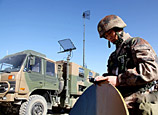
WELLINGTON, May 9 (Xinhua) -- Major terrorist attacks that incur mass casualties are often part of a pattern that starts with several small-scale attacks, according to a New Zealand research.
Terrorist attacks that resulted in heavy loss of life were important to understand because the vast majority of attacks killed one person or no one at all, University of Canterbury psychology lecturer Dr Andy Martens said Thursday.
"Our research using the Global Terrorism Database produced by the National Consortium for the Study of Terrorism and Responses to Terrorism shows that of the 132,041 people killed in attacks between 1970 and 2008, a total of 42,703 people died in 1 percent of the attacks," Martens said in a statement.
"The small number of more deadly attacks accounts for a disproportionate number of the total fatalities resulting from terrorist attacks."
The researchers tested for patterns of escalation in the subset of small-scale attacks that terrorists committed leading up to big attacks, and found an escalating trajectory tended to emerge in smaller attacks that precede major attacks, killing 20 people or more.
"Before any big attacks, the lethality of a group's attacks tended to first decrease and then increase such that the number of people killed increased most steeply just prior to a big attack. Further, groups tend to attack frequently just prior to a big attack," said Martens.
Not all terrorist groups followed that pattern, but uncovering systematic patterns in attacks that preceded highly lethal attacks could help predict and understand attacks that killed many people.
The escalation model could also prove useful for interventions and monitoring killings in other contexts such as war, genocide and gang violence.
















 S China city looks like Venice after heavy downpour
S China city looks like Venice after heavy downpour


![]()
